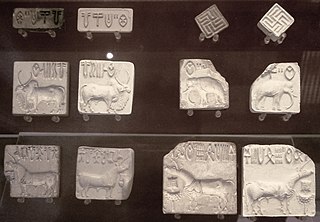by Pamela Toler
Around 2500 BCE, the first cities appeared on the banks of the Nile in Egypt, at the delta of the Tigris and Euphrates in ancient Mesopotamia (modern Iraq), and in the valley of the Indus River in what is now Pakistan and northwest India India.
Thanks to the Old Testament, traveling museum exhibitions, and popular media, most of us know a little about the civilizations of ancient Egypt and Mesopotamia. We have clear images in our heads of mummies, the pyramids, the Sphinx, King Tut and Nefertiti. Assyria, Nebuchadnezzar, and the hanging gardens of Babylon are familiar names.
But how much do you know about the Indus Valley civilization? My guess is, not much. No one does.
Unlike Egypt and Mesopotamia, the ruins of the Indus Valley civilization are not glamorous. There are no palaces, no temples, no public monuments. (There was, however, piped water. Given a choice, would you rather have pyramids or plumbing? Me, too.) Centered on two main cities, Harappa and Mohenjo-Dara, the remains of the culture are scattered over an area of 1.2 square kilometers. The cities are laid out in a grid design that feels familiar to anyone who knows the American Midwest. The buildings are made of uniform brick and are relatively unadorned. (Sounds like Chicago, doesn’t it?)
Also unlike ancient Egypt and Mesopotamia, scholars have not deciphered the Indus Valley script. With no public monuments and no preserved documents, most of our examples of the script are limited to very short samples contained on the small engraved seals that are the most typical artifact of the Indus Valley civilization. Not a great sample for a project that depends on the numbers.
There have been more than a hundred separate attempts to decipher the script, with little success. Thanks to a group of Indian mathematicians and computer scientists, led by computational neuroscientist Rao Rajesh, we’re closer than we’ve ever been. Keep your fingers crossed.

